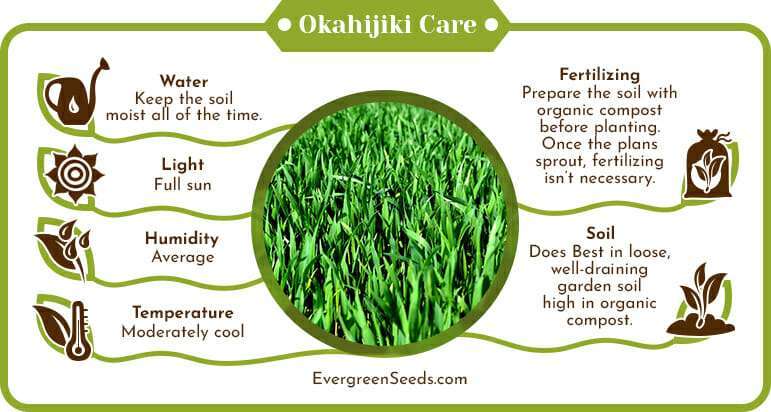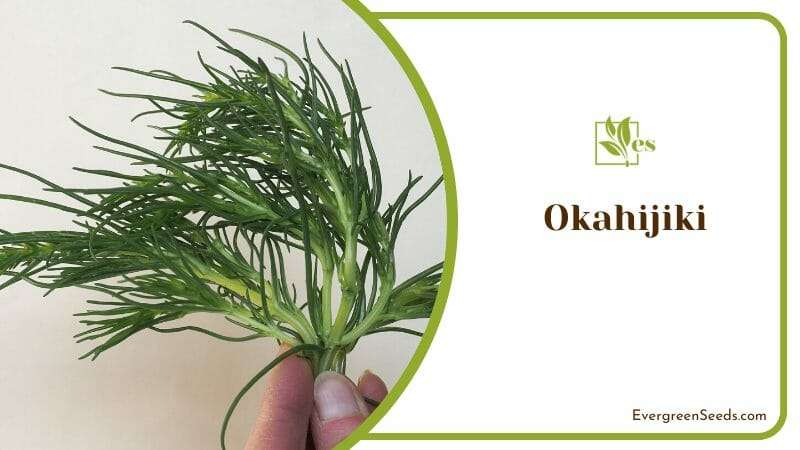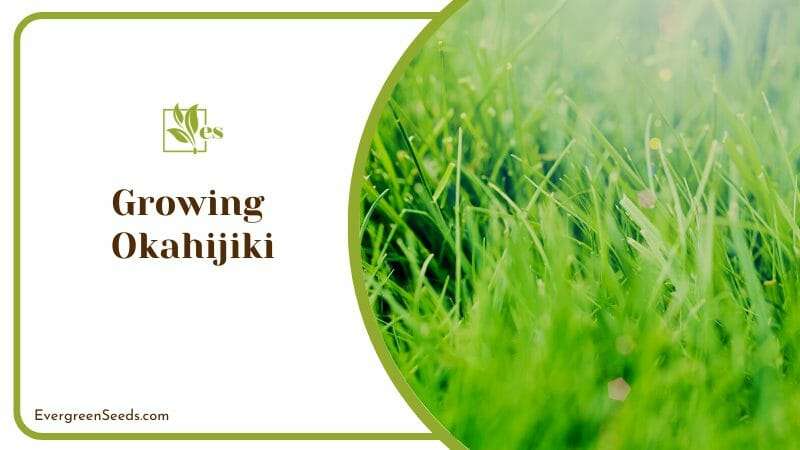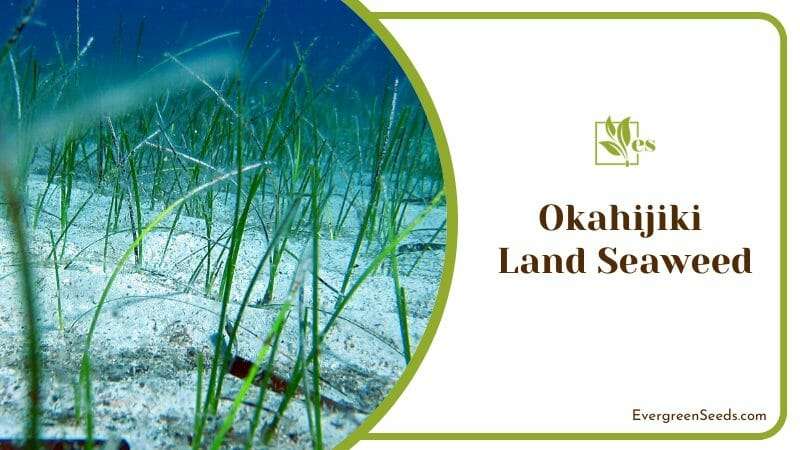- When to Plant Corn in San Diego: Optimal Seasons and Tips - July 19, 2024
- When to Plant Hydrangeas in Illinois: Best Timing for Optimal Growth - July 19, 2024
- Why Are My Radishes Growing Above Ground: Uncovering the Causes - July 19, 2024
 Okahijiki of the Amaranthaceae family, also known as land seaweed and salsola komarovii, is the Japanese name for this low-growing annual vegetable found along coastlines in Japan, China, and Russia.
Okahijiki of the Amaranthaceae family, also known as land seaweed and salsola komarovii, is the Japanese name for this low-growing annual vegetable found along coastlines in Japan, China, and Russia.
The plant is cultivated for the fresh, young shoots that are eaten raw or added to stir-fry, soups, and other dishes.
Land seaweed of the Salsola genus is relatively unknown in the United States, and it’s unlikely you will find it in local stores.
Growing okahijiki in your garden isn’t very difficult when you provide the proper conditions for this unique plant. Okahijiki is an interesting vegetable to add to your edible garden that is sure to start conversations with friends and neighbors.
JUMP TO TOPIC
What is Okahijiki?
The name is a combination of the Japanese words for land (oka) and seaweed (hijiki) because the plant grows natively along coastlines in salty conditions most plants can’t tolerate. The delicate branches resemble Japanese seaweed and are tender, crisp, and a little salty. Even though the plant grows in salty conditions, you don’t need to provide a salty environment at home to grow okahijiki plants.
Okahijiki has vibrant green tubular leaves and stems, much like a succulent. It is a compact growing vegetable that does well in containers or the garden. Gardeners looking to take advantage of salty, sandy soil where nothing else will grow may consider planting okahijiki plants that thrive in otherwise hostile conditions.

Okahijiki cultivation in Japan is the primary source of this unique plant. In recent years, the growth of okahijiki in native areas has declined due to coastal development. U.S. gardeners can learn to grow the rare and exciting okahijiki to provide a nutritious and tasty garden green that compliments fish dishes.
How to Grow Okahijiki
Growing okahijiki is a plant you won’t see in many gardens in the U.S. The plant is virtually unknown outside of specialty growers and is exceedingly rare to find, even at farmers’ markets.
You can grow okahijiki in your garden quite quickly by following a few suggestions and providing the right care. Okahijiki doesn’t need saltwater to thrive, but it does need the sun to grow well.
What Does It Taste Like?
The texture and taste of okahijiki are more juicy than crisp, with a slightly peppery flavor and a delicate, salty aftertaste. The leaves and stems are edible, but older parts of the plant can become woody.
Gardeners can harvest okahijiki several times during a growing season, and the plant will regrow. Once you start growing okahijiki plants, you’ll find numerous recipes to use the tasty leaves and stems as a compliment for mild flavors like fish or noodle dishes.
How to Use Okahijiki
The tender shoots and tubular leaves are best eaten fresh. They are delicious when eaten raw, and they make a highly nutritious snack. Popular recipes blanch or steam the young leaves and add them to dishes for flavor and texture.
It’s an excellent companion to Japanese sushi rice, salted fish and adds interest to raw salads. Japanese chefs often pickle the young leaves and serve as a condiment with many dishes.
– Nutritional Value: Benefits
Land seaweed is full of nutritious goodness. It has more nutritional value than spinach and provides essential vitamins and minerals, including Vitamin A, Iron, Calcium, and Potassium.
Unlike Japanese Seaweed (Hijiki), okahijiki doesn’t contain high inorganic arsenic levels, so it is a great substitution for seaweed for people concerned about the risk of cancer.
– Why You Should Eat Okahijiki
Among the numerous uses in culinary and health circles, okahijiki has been used to treat many common ailments for centuries.
The antioxidant and nutritional values of the planet make it ideal for weight loss and boosting energy while promoting a healthy immune system and preventing influenza. Poultices made from okahijiki can reduce swelling and pain from wasp stings and traditionally was a treatment for smallpox.
When to Plant
Okahijiki plants grow best in moderately cool temperatures. U.S. gardeners can plant okahijiki under row cover once the threat of frost has passed or wait until mid-spring to plant in the garden.

A second planting in late summer will provide okahijiki well into winter in many parts of the country. Okahijiki grows exceptionally well under polytunnels and in greenhouses.
– How to Sprout the Seeds
Okahijiki is easiest to start by directly sowing seeds in your garden. It doesn’t transplant well, so starting seeds indoors isn’t necessary. Seeds start well under row cover that traps warmth to the soil. The optimal air temperature for germination is around 75 degrees. Okahijiki seeds require warm temperatures to germinate.
Sow seeds a one-quarter inch deep in small mounds spaced about four inches apart. Seeds typically germinate in seven to ten days. Thin to six inches apart when plants are about five inches tall and use the thinned seedlings in a microgreens salad or eat them raw for a fresh snack.
 Soil Conditions
Soil Conditions
Okahijiki grows in salty, sandy locations in the wild but does even better in loose, well-draining garden soil high in organic compost. The plants prefer neutral pH soils but will grow even in less than ideal conditions and other types of soil.
It isn’t necessary to add salt to the soil to grow okahijiki well. Okahijiki will draw salt from the soil, improving the land and increasing the salty flavor of the edible leaves. Still, the plant does not require additional salt for healthy growth.
 Light Conditions for Growing
Light Conditions for Growing
Land seaweed plants require lots of sun, both direct or indirect. Always plant okahijiki in full-sun locations where the plants can thrive. They are reasonably tolerant of heat and will continue to grow in many parts of the U.S., well into the late fall and early winter. Okahijiki can tolerate temperatures around 35 degrees but will die off when frost hits.
Okahijiki plants grown in shady or partially shady areas will still increase but will be stunted and slow to develop. Plants grown in regions that do not see average temperatures above 80 degrees during the summer may see a reduction in growth beneath what you expect.
 Watering Requirements
Watering Requirements
It is a coastal plant that grows best in damp conditions. When you are growing Okahijiki in your garden, you should make sure the soil remains moist all of the time.
You do not want the soil to dry out, as the plant will die off, but you also don’t want the soil to be soggy. We recommend daily watering during the hot summer months. Using tap water if fine but we suggest purifying it first.
– How Often Does It Need Fertilizer?
U.S. gardeners can prepare the soil with organic compost before planting. Once the plans sprout, fertilizing isn’t necessary.
The use of straw or mulch around the base of okahijiki plants can help retain moisture and prevent the soil from drying out. Still, plants shouldn’t require much care once they are established in your garden.
When to Harvest
Okahijiki plants that sprout in the spring will be ready to harvest in mid-summer between June and August. You can harvest the plants in bunches when they are five to ten inches tall, dark green, and supple.
Frequent harvesting of okahijiki during the growing season encourages new growth. It prolongs the plant’s life, so gardeners should begin snipping off tender shoots once the plant is well established and continue harvesting during the season.
– How to Harvest
Harvesting okahijiki is very simple. All the gardener needs to harvest okahijiki is a sharp pair of scissors. Gather a bunch of okahijiki about 1 inch from the soil and cut cleanly. New shoots will grow from the cut portion, providing fresh and tender okahijiki for your culinary adventures. Discard leaves and stems that are yellowing, limp, or woody.
– Storage Strategies
The best way to store fresh okahijiki is in a plastic bag or container in the refrigerator’s crisper drawer. Okahijiki will keep for several days up to about one week when stored in the fridge and kept slightly moist. Inspect refrigerated okahijiki for dark spots or limpness and discard those parts.
Okahjiki does not freeze well and tends to blacken and wilt when thawed. Gardeners will have more success using traditional Japanese pickling recipes for longer-term storage. In most cases, you’ll be much happier with your okahijiki when it’s eaten fresh.
Propagating Okahijiki Land Seaweed
Okahijiki is an annual plant that dies off at the beginning of winter in the U.S. Gardeners will need to purchase new seeds for the next year or harvest seeds from the crop they grow.

If plants are to be grown for harvesting seed, you should let them mature, and in mid-summer, small yellowish flowers will bloom at the forks of branches. When the flowers have fallen away, the seeds are held in capsules at the flower base and can be collected and stored in a cool, dry place for up to four months.
Pests and Diseases
One of the truly remarkable things about growing okahijiki in the U.S. is the lack of natural pests and diseases.
Very few gardeners in the U.S. have experienced any problems, and the succulent-like leaves seem to deter most insects. Excessive watering can cause mold and rot that impact the roots of growing okahijiki plants.












